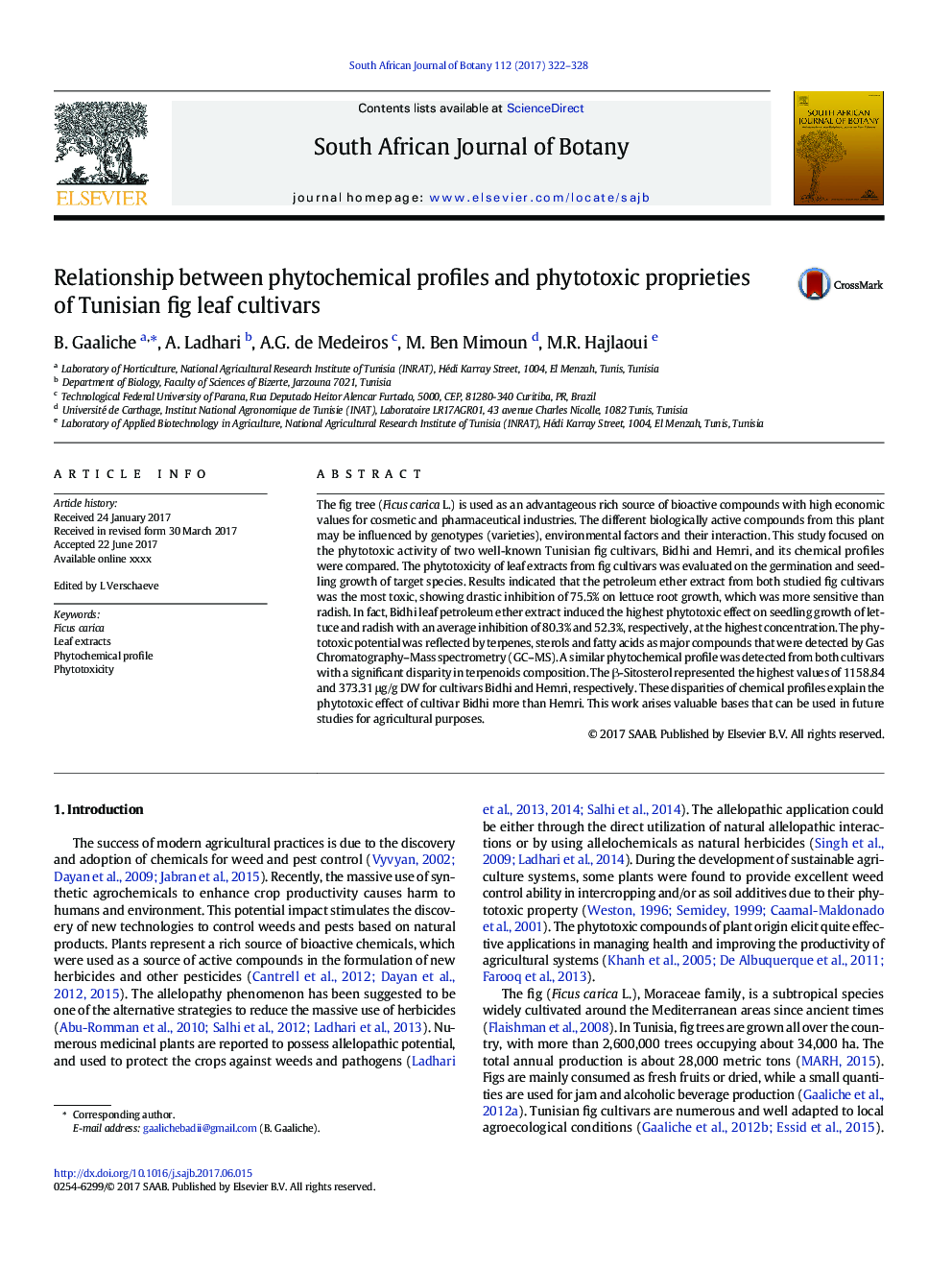| کد مقاله | کد نشریه | سال انتشار | مقاله انگلیسی | نسخه تمام متن |
|---|---|---|---|---|
| 5763187 | 1625146 | 2017 | 7 صفحه PDF | دانلود رایگان |
عنوان انگلیسی مقاله ISI
Relationship between phytochemical profiles and phytotoxic proprieties of Tunisian fig leaf cultivars
ترجمه فارسی عنوان
رابطه بین پروفایل های فیتوشیمیایی و خصوصیات فیتوتوکسیای ارقام برگ انجیر تونس
دانلود مقاله + سفارش ترجمه
دانلود مقاله ISI انگلیسی
رایگان برای ایرانیان
کلمات کلیدی
موضوعات مرتبط
علوم زیستی و بیوفناوری
علوم کشاورزی و بیولوژیک
علوم زراعت و اصلاح نباتات
چکیده انگلیسی
The fig tree (Ficus carica L.) is used as an advantageous rich source of bioactive compounds with high economic values for cosmetic and pharmaceutical industries. The different biologically active compounds from this plant may be influenced by genotypes (varieties), environmental factors and their interaction. This study focused on the phytotoxic activity of two well-known Tunisian fig cultivars, Bidhi and Hemri, and its chemical profiles were compared. The phytotoxicity of leaf extracts from fig cultivars was evaluated on the germination and seedling growth of target species. Results indicated that the petroleum ether extract from both studied fig cultivars was the most toxic, showing drastic inhibition of 75.5% on lettuce root growth, which was more sensitive than radish. In fact, Bidhi leaf petroleum ether extract induced the highest phytotoxic effect on seedling growth of lettuce and radish with an average inhibition of 80.3% and 52.3%, respectively, at the highest concentration. The phytotoxic potential was reflected by terpenes, sterols and fatty acids as major compounds that were detected by Gas Chromatography-Mass spectrometry (GC-MS). A similar phytochemical profile was detected from both cultivars with a significant disparity in terpenoids composition. The β-Sitosterol represented the highest values of 1158.84 and 373.31 μg/g DW for cultivars Bidhi and Hemri, respectively. These disparities of chemical profiles explain the phytotoxic effect of cultivar Bidhi more than Hemri. This work arises valuable bases that can be used in future studies for agricultural purposes.
ناشر
Database: Elsevier - ScienceDirect (ساینس دایرکت)
Journal: South African Journal of Botany - Volume 112, September 2017, Pages 322-328
Journal: South African Journal of Botany - Volume 112, September 2017, Pages 322-328
نویسندگان
B. Gaaliche, A. Ladhari, A.G. de Medeiros, M. Ben Mimoun, M.R. Hajlaoui,
